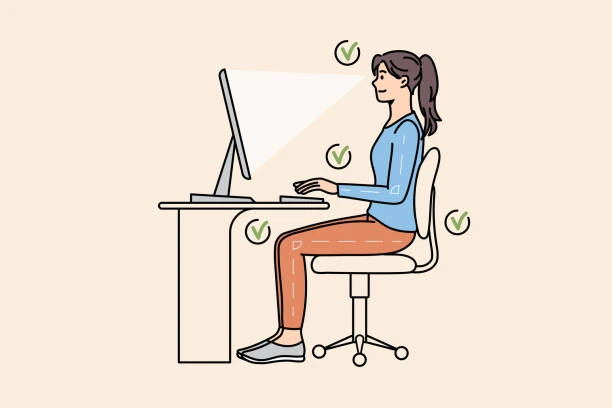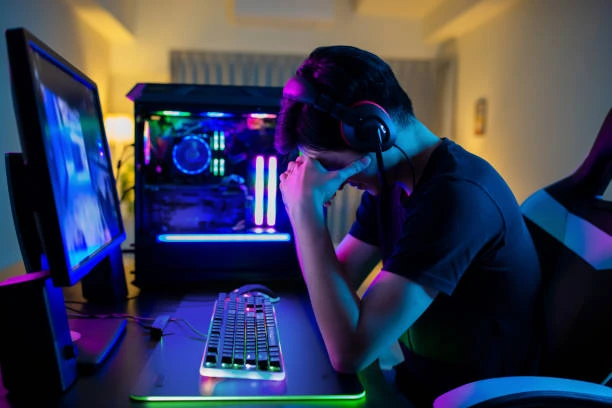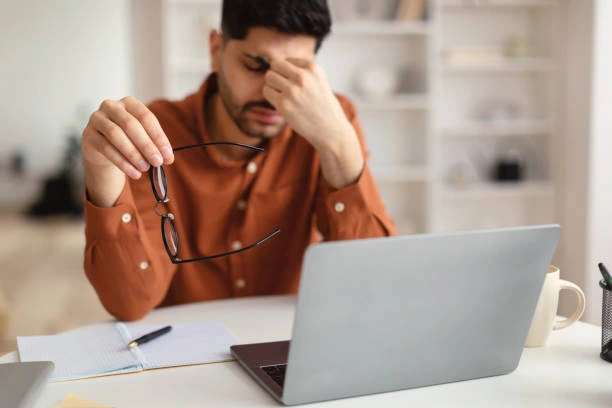Protecting Your Eyes from Digital Eye Strain: Tips and Tricks
In our digital age, it’s no surprise that many of us spend a significant portion of our day staring at screens. Whether it’s for work, study, entertainment, or communication, our reliance on digital devices is undeniable. However, this increased screen time has brought with it a concerning side effect – digital eye strain. In this comprehensive guide, we’ll explore the causes and symptoms of digital eye strain, and most importantly, we’ll provide you with a wide range of tips and tricks to protect your eyes from this common modern ailment.
Understanding Digital Eye Strain
Before delving into the tips and tricks for preventing digital eye strain, it’s essential to understand what it is and why it occurs.
Causes of Digital Eye Strain
Digital eye strain, also known as computer vision syndrome, can be attributed to several factors:
1. Prolonged Screen Time: Spending extended hours in front of a computer, smartphone, or tablet screen can cause eye strain. This is primarily due to the constant focus on a screen at a specific distance, which can tire out your eye muscles.
2. Blue Light Exposure: Digital devices emit blue light, which can disrupt your sleep-wake cycle and strain your eyes. Prolonged exposure to blue light can lead to discomfort and fatigue.
3. Poor Lighting Conditions: Inadequate lighting in your workspace or improper screen brightness and contrast settings can contribute to eye strain. Insufficient lighting forces your eyes to work harder to see the screen, which can lead to discomfort.
Symptoms of Digital Eye Strain
Digital eye strain manifests through various symptoms, and recognizing these signs is essential for early intervention and prevention:
1. Eye Fatigue: One of the most common symptoms, eye fatigue can feel like a persistent heaviness or tiredness in the eyes, often accompanied by a burning or itching sensation.
2. Headaches: Eye strain is a leading cause of headaches, particularly tension headaches. These can range from mild discomfort to severe pain.
3. Dry Eyes: Staring at screens often reduces the frequency of blinking, which leads to dry eyes. This can cause irritation, redness, and discomfort.
4. Blurred Vision: After prolonged screen time, you might notice temporary blurred vision or difficulty focusing on objects at varying distances.
5. Neck and Shoulder Pain: Poor posture and screen positioning can result in neck and shoulder pain, as you hunch or strain to see the screen.
Read More: Does High Blood Pressure Affect Your Vision
Tips for Preventing Digital Eye Strain
Now that we’ve established what digital eye strain is and why it occurs, let’s explore practical tips for preventing it.
Proper Ergonomics

1. Monitor and Chair Positioning: Adjust your monitor’s height and angle so that your eyes are level with the top of the screen. Sit in a chair with good lumbar support to maintain a comfortable, upright posture.
2. Screen Distance and Angle: The ideal screen distance is typically around 20 inches (50 cm) from your eyes. The monitor should be positioned directly in front of you, so you don’t have to turn your head to see it.
The 20-20-20 Rule
1. Explanation of the Rule: The 20-20-20 rule is a simple technique that encourages you to take a 20-second break every 20 minutes and focus on an object at least 20 feet away. This helps relax your eye muscles and reduce strain.
2. How to Implement It: Set a timer or use apps that remind you to take these short breaks. During the break, stand up, stretch, and look out of a window or at a distant object to give your eyes a break.
Adjusting Screen Settings
1. Brightness and Contrast: Ensure that your screen’s brightness and contrast are adjusted to comfortable levels. A screen that is too bright can cause glare, while low contrast can strain your eyes.
2. Font Size and Style: Customize your device’s font settings to ensure text is easily readable. Opt for a larger font size and a clear, non-serif font for improved readability.
Reducing Blue Light Exposure
1. Blue Light Filters: Many devices now have built-in blue light filters or night mode settings. Enable these features, especially in the evening, to reduce the impact of blue light on your eyes.
2. Screen Protectors: Consider using blue light screen protectors or glasses with blue light-blocking coatings to reduce the amount of blue light reaching your eyes.
Good Lighting Practices
1. Natural Light Considerations: Position your workstation near natural light sources if possible. This can reduce the need for artificial lighting during the day and create a more comfortable work environment.
2. Appropriate Artificial Lighting: Ensure that your workspace is well-lit without causing glare on your screen. Overhead and task lighting can be strategically used to minimize strain.
Blinking and Eye Exercises
1. The Importance of Blinking: Remind yourself to blink regularly while working on digital devices. Blinking helps keep your eyes moist and reduces dryness.
2. Simple Eye Exercises: Incorporate brief eye exercises into your routine. These can include rolling your eyes, focusing on a near object and then a distant one, and gently massaging your eyelids to stimulate oil gland secretion.
Proper Eye Care Habits
In addition to the tips mentioned above, adopting proper eye care habits can go a long way in preventing digital eye strain.
Regular Eye Exams
1. The Importance of Eye Check-Ups: Regular eye exams are crucial in identifying and addressing potential eye issues early on. These exams can also help you get an accurate prescription if you require corrective lenses.
2. Frequency of Eye Exams: Adults should aim for an eye exam at least once every two years, and more frequent visits may be necessary for those with existing eye conditions.
Eyewear Options
1. Prescription Glasses and Contact Lenses: If you have vision problems, make sure your prescription is up-to-date and that you wear your glasses or contact lenses as prescribed.
2. Computer Glasses: Consider computer glasses, which are specifically designed to reduce eye strain from extended screen time. They can feature anti-reflective coatings and blue light filters
Learn More: Eyeglasses vs. Contact Lenses: Pros and Cons
Maintaining Eye Health through Diet and Hydration
1. Importance of Hydration: Staying well-hydrated is essential for maintaining eye moisture. Dehydration can exacerbate dry eyes, so drink an adequate amount of water daily.
2. Foods Beneficial for Eye Health: Incorporate foods rich in vitamins and nutrients essential for eye health into your diet. Carrots, spinach, sweet potatoes, and fish like salmon are excellent choices. These foods contain vitamins A, C, E, and omega-3 fatty acids that promote healthy eyes.
Practical Tricks for Minimizing Digital Eye Strain
Besides the foundational tips discussed above, you can implement additional tricks to minimize digital eye strain in specific situations.
Smartphone and Device Usage

1. Reducing Smartphone Strain: When using your smartphone, hold it at eye level to reduce neck strain. Adjust the text size and brightness to make it comfortable to read without squinting.
2. Mobile App Recommendations: Explore apps that help reduce eye strain. There are various apps available that apply blue light filters, adjust screen brightness, and remind you to take regular breaks.
Work and Study Strategies
1. Organizing Workspaces: Maintain a clean and clutter-free workspace to reduce distractions and eye strain. Use desk organizers to keep your area tidy.
2. Time Management Techniques: Implement time management methods such as the Pomodoro Technique, which involves working in focused intervals and taking short breaks, to improve productivity and reduce eye strain.
The Role of Screen Breaks
1. How to Maximize Screen Breaks: During screen breaks, step away from your desk and engage in activities that don’t involve screens. Stretch, go for a short walk, or do breathing exercises to refresh your eyes and mind.
2. Productive Activities During Breaks: Use breaks to accomplish non-screen-related tasks like making a to-do list, organizing your workspace, or doing a quick meditation to clear your mind.
Addressing Special Considerations
It’s important to consider how different demographics and specific activities can affect digital eye strain and how to address these unique situations.
Children and Digital Eye Strain
1. Parental Guidance: Parents should monitor and limit their children’s screen time. Establish clear rules and encourage outdoor play to balance screen activities.
2. Setting Screen Time Limits: Depending on age, children should have daily screen time limits. The American Academy of Pediatrics recommends one hour or less of screen time for children aged 2 to 5.
Gaming and Eye Health

1. Recommendations for Gamers: Gamers often spend long hours in front of screens. To reduce strain, use gaming glasses, ensure proper lighting, and take regular breaks. Adjust your screen’s refresh rate and resolution for optimal visual comfort.
2. Gaming Monitor Considerations: When selecting a gaming monitor, prioritize features like blue light filters, fast refresh rates, and adjustable stand height to optimize your gaming experience while reducing eye strain.
Medical Conditions and Digital Eye Strain
1. Health Conditions that Exacerbate Eye Strain: Certain medical conditions, such as diabetes and autoimmune diseases, can make you more susceptible to eye strain. It’s crucial to manage these conditions effectively and take extra precautions to protect your eyes.
2. Managing Eye Strain with Medical Conditions: If you have a medical condition that affects your eye health, consult with your healthcare provider or an ophthalmologist. They can provide personalized advice and treatments to alleviate eye strain.
Further Reading: 10 Ways to Take Care of Your Eyes
Conclusion
In today’s digital world, protecting your eyes from digital eye strain is essential for your overall well-being and productivity. By understanding the causes and symptoms of digital eye strain and implementing the tips and tricks provided in this guide, you can significantly reduce the discomfort and potential long-term effects of prolonged screen time. Remember, your eyes are invaluable, and taking steps to care for them is an investment in your future eye health. Start implementing these strategies today to enjoy clear and comfortable vision, whether you’re at work, studying, or simply enjoying your favorite digital pastimes.

